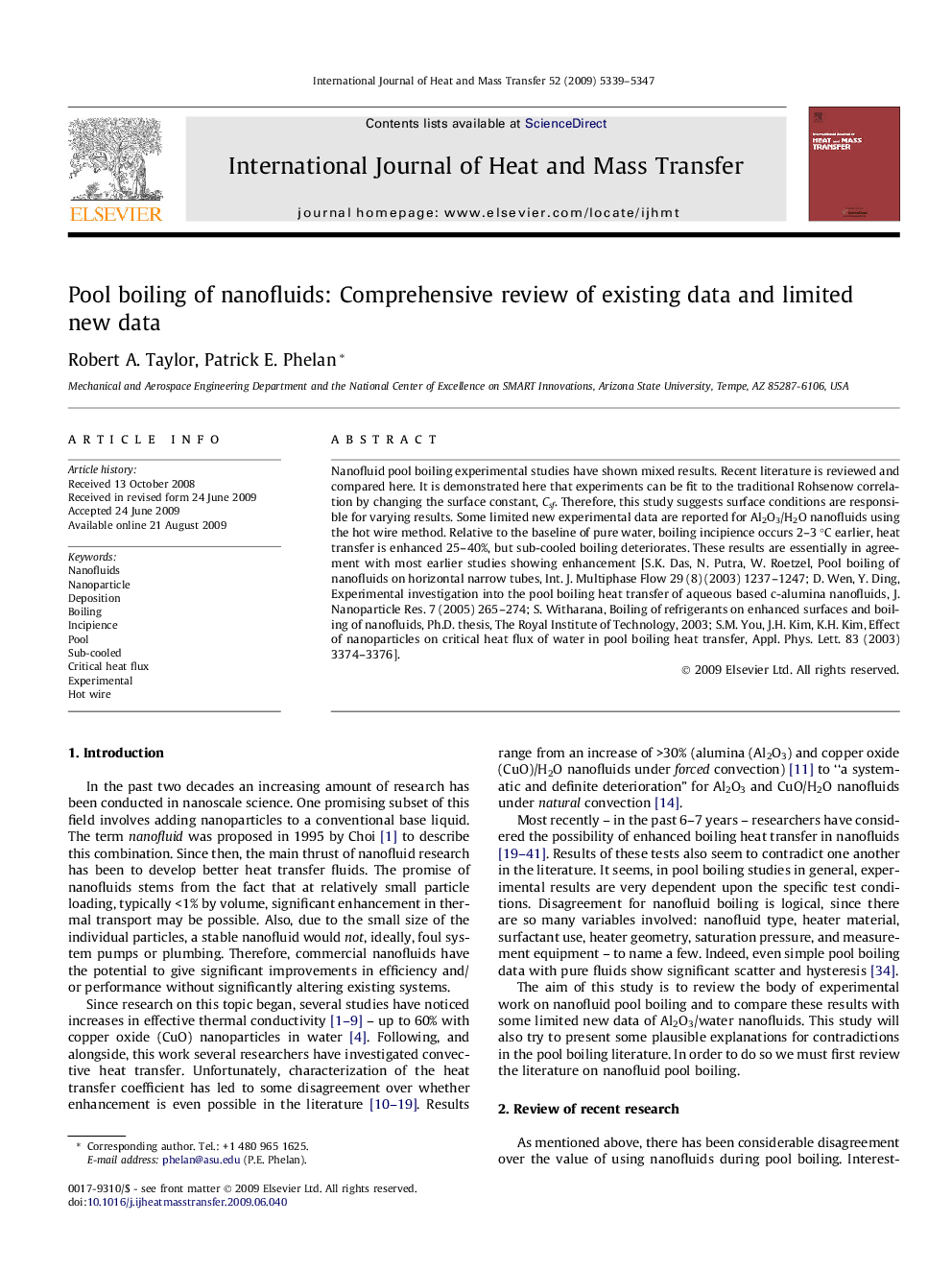| Article ID | Journal | Published Year | Pages | File Type |
|---|---|---|---|---|
| 661665 | International Journal of Heat and Mass Transfer | 2009 | 9 Pages |
Nanofluid pool boiling experimental studies have shown mixed results. Recent literature is reviewed and compared here. It is demonstrated here that experiments can be fit to the traditional Rohsenow correlation by changing the surface constant, Csf. Therefore, this study suggests surface conditions are responsible for varying results. Some limited new experimental data are reported for Al2O3/H2O nanofluids using the hot wire method. Relative to the baseline of pure water, boiling incipience occurs 2–3 °C earlier, heat transfer is enhanced 25–40%, but sub-cooled boiling deteriorates. These results are essentially in agreement with most earlier studies showing enhancement [S.K. Das, N. Putra, W. Roetzel, Pool boiling of nanofluids on horizontal narrow tubes, Int. J. Multiphase Flow 29 (8) (2003) 1237–1247; D. Wen, Y. Ding, Experimental investigation into the pool boiling heat transfer of aqueous based c-alumina nanofluids, J. Nanoparticle Res. 7 (2005) 265–274; S. Witharana, Boiling of refrigerants on enhanced surfaces and boiling of nanofluids, Ph.D. thesis, The Royal Institute of Technology, 2003; S.M. You, J.H. Kim, K.H. Kim, Effect of nanoparticles on critical heat flux of water in pool boiling heat transfer, Appl. Phys. Lett. 83 (2003) 3374–3376].
